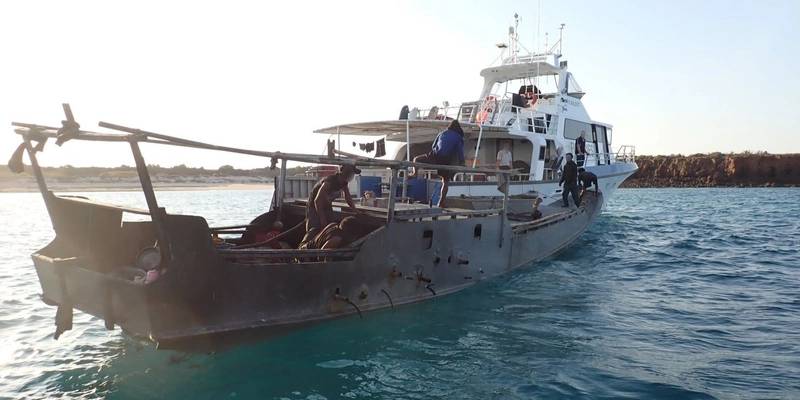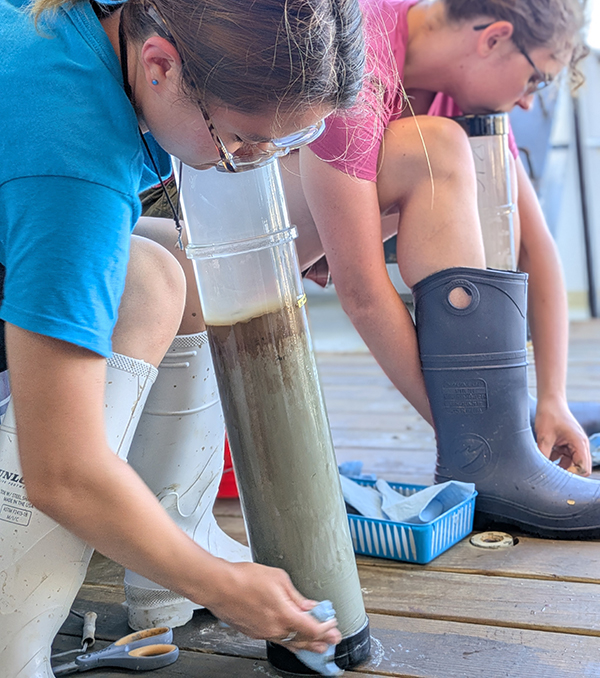Greece to create new marine reserves to protect underwater wildlife – KPCNews

Greece Announces Major Marine Conservation Initiative in Alignment with UN Sustainable Development Goals
Fulfillment of International Commitments to SDG 14
The government of Greece, led by Prime Minister Kyriakos Mitsotakis, has announced the establishment of two new marine protected areas. This action directly fulfills a commitment made at a United Nations oceans conference in June and represents a significant national contribution to the achievement of the UN’s Sustainable Development Goals (SDGs), particularly SDG 14: Life Below Water.
Details of the New Marine Protected Areas (MPAs)
The initiative will establish two extensive protected zones, which are poised to be among the largest in the Mediterranean Sea. The designated locations are:
- The Ionian Sea
- The Southern Cyclades in the Aegean Sea
In a formal statement, Prime Minister Mitsotakis highlighted the scale of the project, noting the new zones would be “among the largest marine protected areas in the entire Mediterranean.”
Contribution to Global Sustainability Agenda
The creation of these MPAs is a direct measure to address key targets within the global sustainability framework. The primary contributions include:
- SDG 14 (Life Below Water): The core objective is to conserve and sustainably use marine ecosystems. This initiative directly supports Target 14.5, which calls for the conservation of coastal and marine areas.
- SDG 17 (Partnerships for the Goals): By acting on a pledge made at a UN conference, Greece demonstrates its commitment to global partnerships for achieving sustainable development.
- SDG 13 (Climate Action): Protecting marine biodiversity and habitats enhances the ocean’s resilience and its capacity as a critical carbon sink, thereby contributing to climate change mitigation and adaptation efforts.
1. Which SDGs are addressed or connected to the issues highlighted in the article?
-
SDG 14: Life Below Water
This is the primary SDG addressed in the article. The goal aims to “Conserve and sustainably use the oceans, seas and marine resources for sustainable development.” The article directly discusses the creation of “two new protected marine areas” in Greece, which is a core action for conserving marine life and ecosystems.
-
SDG 17: Partnerships for the Goals
This SDG is relevant because the action described is a fulfillment of an international commitment. The article states that the Greek Prime Minister was fulfilling “a promise he made at a United Nations conference on the oceans in June.” This demonstrates a commitment to global partnerships and policy coherence for sustainable development.
2. What specific targets under those SDGs can be identified based on the article’s content?
-
Target 14.5: Conserve coastal and marine areas
This target aims to “conserve at least 10 per cent of coastal and marine areas, consistent with national and international law and based on the best available scientific information.” The article’s central theme—the creation of two new protected marine areas in the Ionian Sea and the Southern Cyclades—is a direct contribution to achieving this target. The statement that these will be “among the largest marine protected areas in the entire Mediterranean” emphasizes the significance of this contribution.
-
Target 14.2: Protect and restore ecosystems
This target calls for sustainably managing and protecting marine and coastal ecosystems to avoid significant adverse impacts. Establishing protected areas is a fundamental strategy for achieving this, as it helps shield these ecosystems from harmful activities, allowing them to remain healthy and resilient.
-
Target 17.16: Enhance the global partnership for sustainable development
This target focuses on enhancing global partnerships, complemented by multi-stakeholder partnerships. The Greek Prime Minister’s action is a direct follow-through on a commitment made at a “United Nations conference on the oceans,” which serves as a platform for such global partnerships. This act reinforces the country’s commitment to international environmental agreements.
3. Are there any indicators mentioned or implied in the article that can be used to measure progress towards the identified targets?
-
Indicator for Target 14.5: Coverage of protected areas
While the official UN indicator (14.5.1) is the “Coverage of protected areas in relation to marine areas,” the article provides a direct, tangible measure of progress: the creation of two new protected marine areas. The article also provides a qualitative measure of their scale, describing them as “among the largest marine protected areas in the entire Mediterranean,” which implies a significant increase in the total area under protection.
-
Indicator for Target 14.2: Implementation of protective measures
The establishment of the protected areas itself serves as an indicator. It is a concrete action taken to “sustainably manage and protect marine and coastal ecosystems,” as called for by the target.
-
Indicator for Target 17.16: Fulfillment of international commitments
An implied indicator is the fulfillment of the promise made at the United Nations conference. This demonstrates the country’s active participation in and commitment to global partnerships for sustainable development, turning a pledge into a concrete policy action.
4. SDGs, Targets, and Indicators Table
| SDGs | Targets | Indicators |
|---|---|---|
| SDG 14: Life Below Water | Target 14.5: By 2020, conserve at least 10 per cent of coastal and marine areas… | The creation of two new protected marine areas (in the Ionian Sea and Southern Cyclades). |
| SDG 14: Life Below Water | Target 14.2: By 2020, sustainably manage and protect marine and coastal ecosystems… | The act of establishing the protected areas as a measure to protect marine ecosystems. |
| SDG 17: Partnerships for the Goals | Target 17.16: Enhance the global partnership for sustainable development… | Fulfillment of a promise made at a United Nations conference on the oceans. |
Source: kpcnews.com

What is Your Reaction?
 Like
0
Like
0
 Dislike
0
Dislike
0
 Love
0
Love
0
 Funny
0
Funny
0
 Angry
0
Angry
0
 Sad
0
Sad
0
 Wow
0
Wow
0












































































